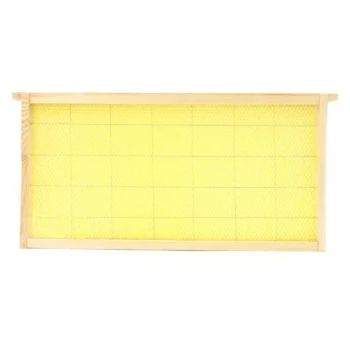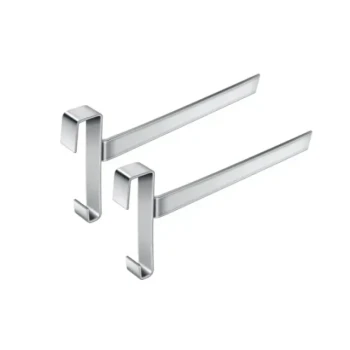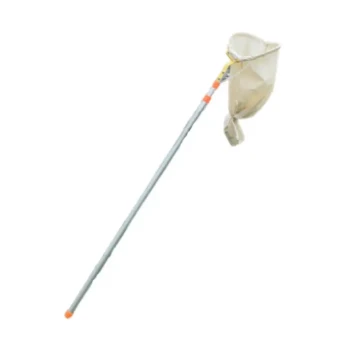The most effective way to keep ants out of a Flow Hive is to create a physical barrier on the legs of your hive stand that they cannot cross. This is typically achieved by placing the hive stand's legs into small containers of oil or by applying a thick, sticky substance like petroleum jelly around each leg. Since bees fly into the hive, these ground-based barriers only affect crawling insects like ants.
The core principle is to break the physical path ants use to climb from the ground into your hive. By creating an impassable "moat" or a sticky trap on the hive stand legs, you protect the colony without using chemicals that could harm your bees.
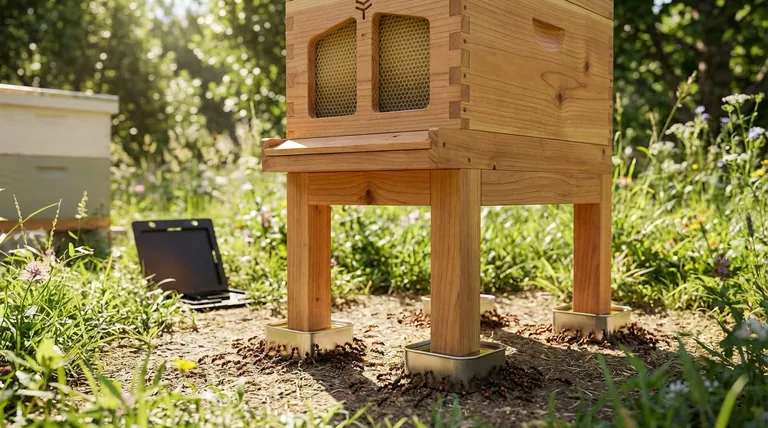
Why Ants Are a Threat to Your Hive
Before implementing a solution, it's important to understand why this is a critical issue. Ants are not just a minor nuisance; they can pose a significant threat to the health and productivity of a honeybee colony.
Resource Theft
Ants are drawn to the hive for its rich resources. They will steal honey, nectar, pollen, and even bee larvae and eggs, depriving your colony of essential food needed for growth and survival.
Colony Stress
A constant invasion of ants places the colony under significant stress. Guard bees are forced to expend energy fighting off intruders, diverting them from other vital tasks like foraging and hive maintenance.
Risk of Absconding
In severe cases, a persistent and overwhelming ant infestation can cause the colony to abscond. The bees may decide the location is untenable and abandon the hive entirely.
Creating an Effective Physical Barrier
Your goal is to make it impossible for ants to crawl up the hive stand. Both methods below are highly effective and bee-safe when implemented correctly.
The Moat Method
This involves placing each leg of your hive stand into a small, shallow container filled with a liquid.
Think of a small tuna can or a plastic container placed under each leg. The liquid creates a moat that ants cannot cross. You have two primary choices for the liquid:
- Oil: Mineral oil or vegetable oil works perfectly. It does not evaporate quickly, making it a low-maintenance option, especially in hot climates.
- Water: Water can also work but evaporates rapidly and will need constant refilling. It can also become a breeding ground for mosquitos.
The Sticky Barrier Method
This involves applying a thick, sticky substance in a complete band around each leg of the hive stand.
Ants will not attempt to cross a thick, gooey barrier.
- Petroleum Jelly (Vaseline): A thick, 2-3 inch wide band of petroleum jelly applied to each leg is a simple and effective deterrent.
- Commercial Products: Products like Tanglefoot are designed for this purpose, but you must ensure they are applied only to the stand, never the hive body itself, to keep them away from the bees.
Understanding the Trade-offs and Best Practices
Simply setting up a barrier is not enough. Proper maintenance and awareness of potential pitfalls are crucial for long-term success.
Maintain Your Barriers
Moats can fill with rain, dirt, or dead insects, creating a bridge for ants to cross. Clean them out periodically. Sticky barriers can also get covered in dust or debris, so they may need to be wiped clean and reapplied.
Avoid Accidental Bee Traps
A moat can accidentally trap and drown your own bees. To prevent this, place small twigs or pieces of screen in the oil or water, giving any trapped bee a ladder to climb out safely.
Eliminate All Other Bridges
Your barrier is useless if ants have another way up. This is the most common point of failure. Ensure no blades of grass, weeds, or leaning branches are touching the hive. Your hive stand must be the only point of contact between the hive and the ground.
Making the Right Choice for Your Goal
Your choice of barrier method may depend on your climate and maintenance preference.
- If your primary focus is a low-maintenance solution in a hot climate: Use oil-filled moats, as they will not evaporate like water.
- If your primary focus is simplicity and avoiding liquid spills: A thick band of petroleum jelly is extremely effective and easy to apply.
- If your primary focus is preventing any insect from being trapped: The sticky barrier method is generally superior, as it deters crossing without trapping.
Ultimately, protecting your hive from ants is a simple but essential part of responsible beekeeping.
Summary Table:
| Barrier Method | Key Feature | Best For |
|---|---|---|
| Oil Moat | Uses oil in a container under each leg; low evaporation. | Hot climates, low maintenance. |
| Sticky Barrier | Applies petroleum jelly or Tanglefoot around legs. | Simplicity, avoiding liquid traps. |
| Water Moat | Uses water (needs frequent refilling). | Short-term use, easy setup. |
Protect your apiary's productivity with professional-grade solutions from HONESTBEE. As a trusted supplier for commercial apiaries and beekeeping equipment distributors, we provide durable hive stands, protective barriers, and wholesale-focused equipment to safeguard your investment. Ensure your colonies thrive without ant invasions—contact our experts today to discuss your needs and secure reliable, bee-safe supplies.
Visual Guide
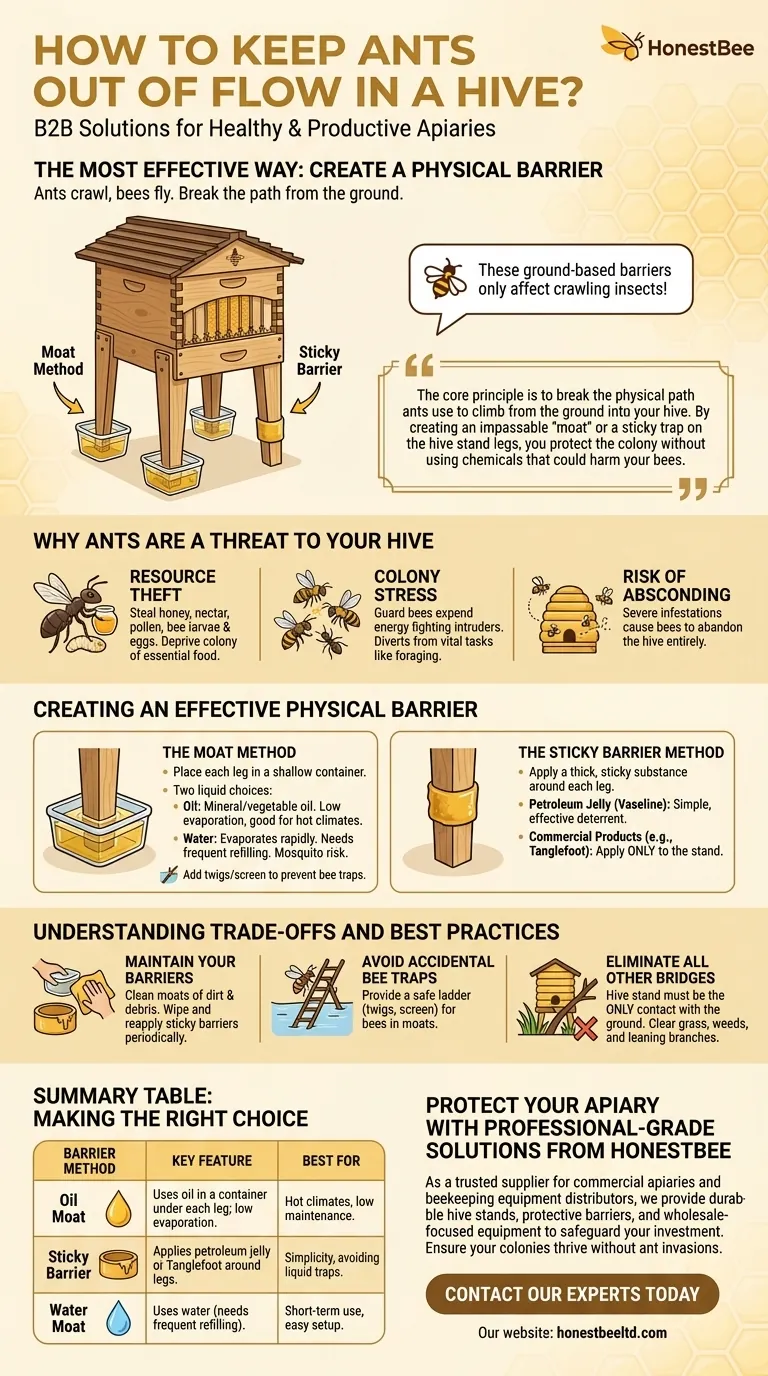
Related Products
- Black Plastic Beetle Barn Hive Beetle Trap for Beehives
- Wholesales Dadant Size Wooden Bee Hives for Beekeeping
- Professional Insulated Winter Hive Wrap for Beekeeping
- HONESTBEE Advanced Ergonomic Stainless Steel Hive Tool for Beekeeping
- HONESTBEE Professional Long Handled Hive Tool with Precision Cutting Blade
People Also Ask
- What should be done if a hive shows signs of a small hive beetle infestation? Protect Your Hive Now
- What tips can help prevent hive beetle infestations? Build Strong Colonies & Master Apiary Hygiene
- Why are hive beetle traps important for beekeepers? Protect Your Hive from a Devastating Infestation
- What are the steps for installing hive beetle traps? A Guide to Effective Beetle Control
- What are the chemical-free options for trapping hive beetles? Control Pests Without Chemicals














